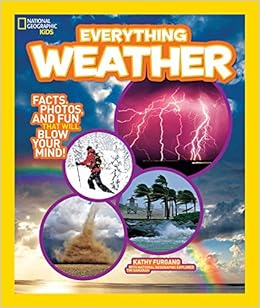Sylvester and the Magic Pebble
By William Steig
Published: 1969
Awards: 1970 Caldecott Award Winner, National Book Association Finalist, 1970
Many of my colleagues that write about mentor texts, advocate for sticking with familiar and favorite authors when you are building your mentor text collection.
I agree with that idea—to a point. The point is that there are many, many wonderful new books by wonderful new authors that are just waiting to be ‘discovered’ by us to use in our classrooms, as read-alouds, for shared reading and as mentor texts.
I feel that I owe my many readers and followers of this blog the opportunity to be exposed to new authors and titles so that you can possibly move them into your mentor text collection…for the kids! (It should always be about—what is best for the kids!)
I know that you are tremendously busy with your classroom work, so I feel it is part of my job to read these new books and put them on my mentor text blog for your convenience of taking it a step further to vet the books for your own use.
Saying all that—today on the way to the library to browse and find some books to write reviews for the blog—all of a sudden, a title—Sylvester and the Magic Pebble-just popped into my mind!! Getting to the library, I went straight to the ’S’ section of the picturebooks (for Steig, of course!), and there it was-Sylvester and the Magic Pebble —just waiting for me!
SO—today I am sticking to an old, familiar favorite author and title!
If you are an upper elementary teacher, Sylvester and the Magic Pebble is a perfect mentor text for reading and writing workshop for many reading strategies and writing craft moves.
I would use it especially in writing workshop to model personification in an animal fantasy, word choice (Steig uses incredible vocabulary!), elaboration of details, and using those three craft moves to help develop a stronger voice and style.
For any and all grade levels—Sylvester and the Magic Pebble—is a read-aloud MUST!
**Of interesting note—Sylvester and the Magic Pebble was actually banned by several school districts in the late 60s and early 70s because pigs were used to depict the policemen in the story. (In this animal fantasy, personification abounds and all human-like characters are animals.) Oh boy—the 60s!
Also—many students may not know that William Steig is also the author of Shrek!-the book that was behind the well-loved movie.
Book Talk
The Duncan Family lived happily in Oatsdale. They were a very close family of Mother, Father and son, Sylvester and they loved doing activities together. One of Sylvester’s very favorite hobbies was collecting interesting pebbles.
One day when he is out walking, he found a bright red, perfectly rounded pebble! He picked it up and held it. Because it was cold and rainy- he immediately (and without really realizing it) made a wish that the rain would stop—and it did! The rain actually stopped in mid-air!
Sylvester was thrilled! He headed home to show his parents! On his way home, his head will filling up with ideas on how the pebble could benefit their life. He was so deep in thought—that he did not notice that a lion had approached him.
Scared—Sylvester immediately made a wish to turn into a rock (instead of wishing the lion would go away!). He turned into a very large rock and the pebble lays nearby.
Some favorite lines:
“The lion came bounding over, sniffed the rock a hundred times, walked around and around it, and went away confused, perplexed, puzzled and bewildered. “
Sylvester’s parents were frantic when he doesn’t return and they asked the whole village to help in the search—but to no avail. They were devastated! And so was Sylvester-when he realized that the chances of someone picking up the red pebble, putting it on the rock, so that he can wish that he could back into himself—is almost nil. He resigned to the fact that he will probably be a rock the rest of his life!
And he probably would have—had not(nearly a year later) his parents decide to take a picnic at the very spot where Sylvester’s big rock was. In fact-they placed their picnic blanket right on top of the rock1
Some more favorite lines:
“They sat down to eat. Sylvester was now as wide awake as a donkey that was rock could possibly be. Mrs. Duncan felt some mysterious excitement. “You know, Father. “ she said suddenly. “I have the strangest feeling that our dear Sylvester is still alive and not far away.”
THEN they noticed the pebble on the ground, picked it up and PLACED IT ON THE ROCK! Sylvester felt the pebble—made his wish to be his regular self again—and ta-dah! He transformed back into Sylvester-to the shock and delight of his parents.
They decided to put the magic pebble away-they may need it someday. But they realized they had all they really needed with the three of them being together.
Suggested Uses As a Mentor Text:
Book Genre: Animal Fantasy
Reading Workshop Strategies: Questioning, Inferring, Analyzing, Connections to traditional literature (magic, talking animals), Personification
Writing Workshop Genre and Strategies: Fantasy Writing, Elaboration, Word Choice, Voice, Personification
Bio on William Steig: http://us.macmillan.com/author/williamsteig











